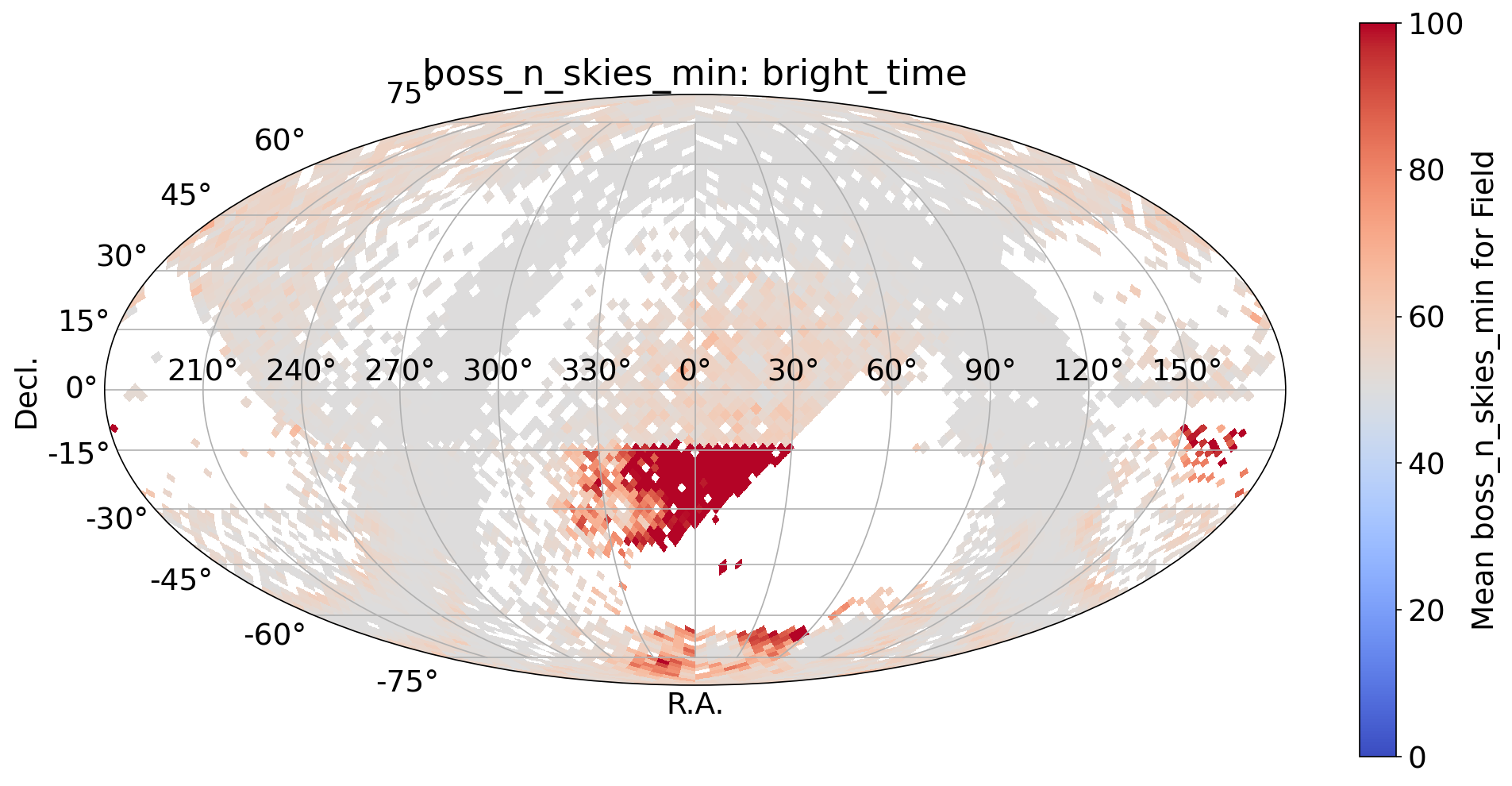The package mugatu validates a set of SDSS-V designs based on a set of predetermined requirements. Designs correspond to a single planned observation and consist of a set of assignments of fibers to targets in the focal plane. These validation checks ensure the observability of designs and that they meet a series of science requirements.
Design Requirements
Observability is the ability of fibers to reach their desired target and that the path of these fibers avoids collisions. These checks rely on path generation methods from kaiju.
The science requirements checked by mugatu consist of:
- Number of standards and skies for each spectrograph
- Distribution of standards and skies for each spectrograph across the field of view
- Standards are within some magnitude limit
- Science targets are within some magnitude limit
- Fibers are not placed too close to bright field stars
A designmode, which is a set of numerical values, parameterizes the above requirements. This can be as simple as an integer value, which describes the minimum number of skies or standards, or a list of numbers, which sets the magnitude limits for targets in a number of photometric bands.
Survey Plan Validation
mugatu serves two main purposes. First, robostrategy, the survey planning tool, uses mugatu to apply constraints to designs as it creates them. Second, mugatu validates both individual designs and entire survey plans after the fact. It is not feasible to always constrain assignments in designs on all designmode‘s (see more detailed discussion in Medan et al. in prep.), so the additional validation serves as a final check on these and other constraints.
Below shows an example of the global validation for the number of BOSS skies in bright time for the DR19 observing plan:

Designs with more than 50 skies assigned to BOSS fibers satisfy the science requirements for bright time. We find that nearly all designs successfully meet this criterion. The operations team uses similar diagnostic plots and summary statistics whenever a new survey plan is created. This ongoing analysis helps ensure that proposed survey plans consistently meet the requirements necessary for the reduced data to satisfy the quality standards of the various programs.
Loading Survey Plans
Once the team validates a survey plan, mugatu loads it into the targeting database. This enables the observing team at both telescopes to access the survey plan and observe the planned designs. mugatu uses the model classes from sdssdb to load the observing plan.
